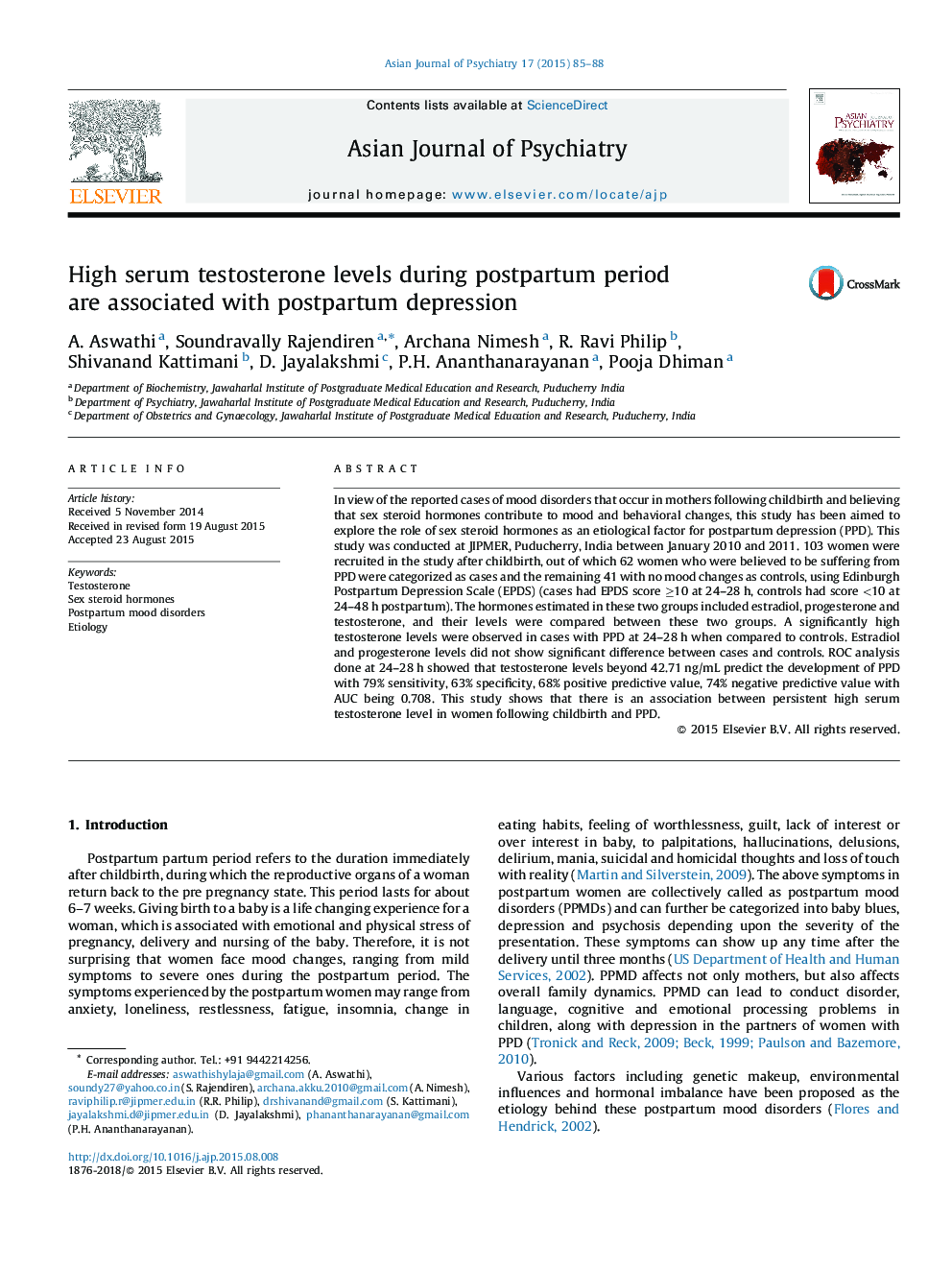| کد مقاله | کد نشریه | سال انتشار | مقاله انگلیسی | نسخه تمام متن |
|---|---|---|---|---|
| 316979 | 1432586 | 2015 | 4 صفحه PDF | دانلود رایگان |
• Role of sex steroid hormones as etiological factor for postpartum mood disorders (PPMDs).
• Estradiol and progesterone levels did not show significant difference.
• Significantly high testosterone level was observed in cases with PPMDs.
• High testosterone levels could contribute to the hormonal etiology of PPMDs.
In view of the reported cases of mood disorders that occur in mothers following childbirth and believing that sex steroid hormones contribute to mood and behavioral changes, this study has been aimed to explore the role of sex steroid hormones as an etiological factor for postpartum depression (PPD). This study was conducted at JIPMER, Puducherry, India between January 2010 and 2011. 103 women were recruited in the study after childbirth, out of which 62 women who were believed to be suffering from PPD were categorized as cases and the remaining 41 with no mood changes as controls, using Edinburgh Postpartum Depression Scale (EPDS) (cases had EPDS score ≥10 at 24–28 h, controls had score <10 at 24–48 h postpartum). The hormones estimated in these two groups included estradiol, progesterone and testosterone, and their levels were compared between these two groups. A significantly high testosterone levels were observed in cases with PPD at 24–28 h when compared to controls. Estradiol and progesterone levels did not show significant difference between cases and controls. ROC analysis done at 24–28 h showed that testosterone levels beyond 42.71 ng/mL predict the development of PPD with 79% sensitivity, 63% specificity, 68% positive predictive value, 74% negative predictive value with AUC being 0.708. This study shows that there is an association between persistent high serum testosterone level in women following childbirth and PPD.
Journal: Asian Journal of Psychiatry - Volume 17, October 2015, Pages 85–88
